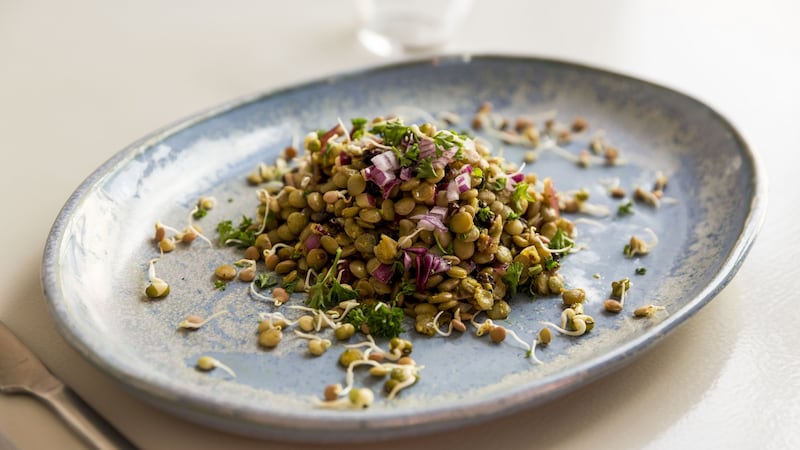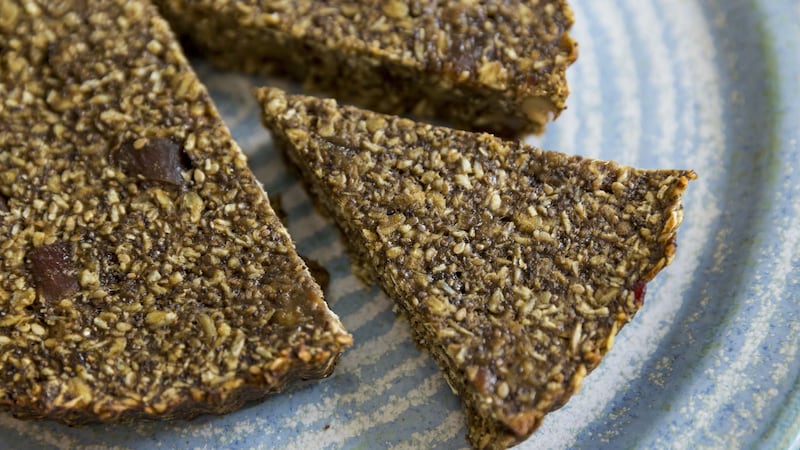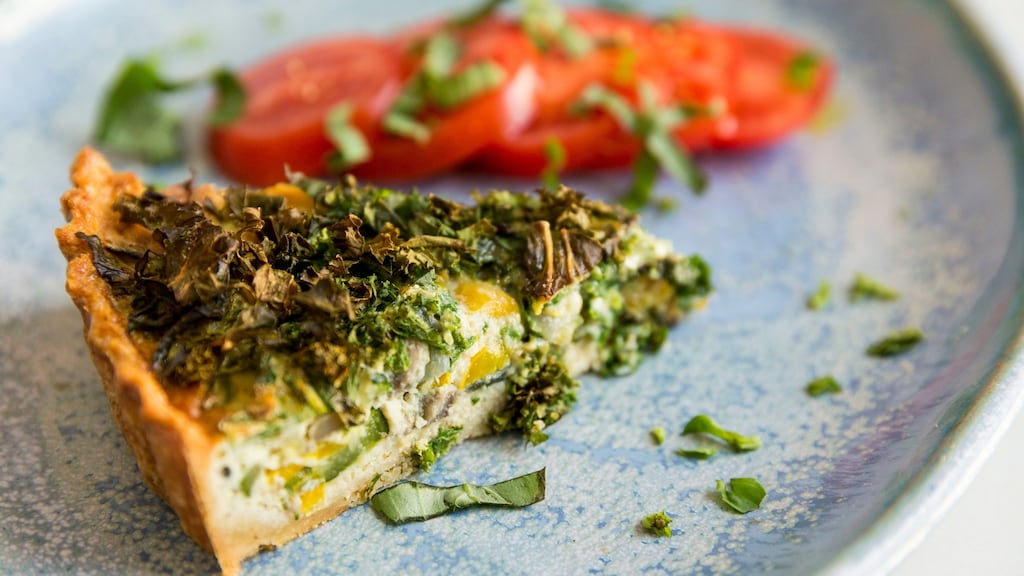It is here again, the dreaded exam period that comes around every year. Even if we don’t have someone in our own families sitting the Junior or Leaving Cert, we’re all transported back to our own year of stress, dread and the pressure we put ourselves under.
We all know how hard it can be and as parents we should take steps to ease the pressure on our students in any way we can. Cooking nutritious meals are the perfect place to start.
This year, my youngest daughter sits the Leaving Cert and I’m excited for many reasons. Firstly, I won’t be distracted by the running of a restaurant, so for the first time I’ll get to design our family meals to suit the demands of a busy student. Secondly, I’m excited to show how good a student I can be after going to an enlightening talk given by a local nutritionist, Majella O’Neill, on “study-based nutrition”.
O'Neill compares preparing for exams to preparing for a big sporting event
The health benefits of what we eat have always played a major role in my cooking, but I was blown away by O’Neill’s approach to feeding a student while focusing on the brain.
“Brain food” is rapidly becoming a buzz phrase, and rightly so, but O’Neill takes this fad and makes it fact. She gave advice on coping with stress and how the mind benefits from regular exercise, and explained the relationship between the gut and brain.
To paraphrase her insight, the gut and brain are in constant communication via a nerve called the vagus nerve. This explains why the gut is often referred to as the second brain. It’s therefore no surprise that what we put into our gut will inevitably affect our brain function – for better or for worse.
The brain uses about 20 per cent of the body’s energy and oxygen, so during these coming weeks we must feed it well, often and with consideration. O’Neill compares preparing for exams to preparing for a big sporting event. We need a constant steady supply of slow-burning fuel and adequate hydration. Fluctuating blood-sugars and dehydration can have a tangible effect on cognition, memory and concentration, as well as stress hormones. It is therefore vital to keep blood sugars balanced by eating little and often, making sure to never go hungry.
She offered up several helpful tips to keep your blood sugars in check. Some are simple but effective, like making sure there are good proteins and fats in every meal and making sure you keep carbohydrate levels low. Fats are a better source of energy than carbohydrates or caffeine as they don’t cause sudden spikes and drops in blood sugar.
Some tips were more intriguing, I love her suggestion of using cinnamon when you do eat carbs as it helps to stabilise blood sugars. Another clever idea of hers is combining olive and flax oils with a little butter to make a “better butter”, which benefits from the presence of the unsaturated fats in the oils.
Here are a few of my favourite recipes from the evening and I hope you will enjoy making them as much as I have and watching them help your students.

Energy boosting smoothie
This smoothie is a great high-energy and nutrient-dense fuel for the brain and body. Rich in magnesium, healthy fats, protein, vitamins and minerals, it has a lot of what the studying body needs. It’s also hydrating and easy to digest, so useful for when pre-exam nerves can interfere with appetite and digestion. Once you have the basic formula, you can add or subtract ingredients to suit your student’s personal needs and taste.
It’s worth getting into the habit of soaking all nuts overnight as they are easier to blend, are much healthier and some, such as walnuts, loose their bitterness.
Ingredients
Half a ripe avocado
2 handfuls of spinach
1 handful of kale, stalks removed
Half a cucumber
200ml almond or coconut milk, or water
2 tbsp coconut oil
50g soaked almonds
25g soaked cashews
1 tbsp sunflower seeds
1 tbsp chia seeds
Half a banana or a cup frozen fruit
2 tbsp probiotic yogurt
Method
Add all the ingredients to a blender and blend until smooth. If you would like to lighten the consistency, add more liquid.
Rainbow-coloured grain-free tart
There’s no pastry to be made here (and the ground almond base is high in protein). The use of almond milk instead of cream makes it much lighter. Instead of putting the kale into the mixture, I added it to the top of the tart for some extra texture and crunch.
Ingredients
For the crust
240g ground almonds
1 large egg, whisked
2 tbsp melted coconut oil
Pinch of salt
For the filling
1 tbsp coconut oil
1 small onion, finely chopped
100g button mushrooms, sliced
1 red or yellow pepper, sliced
100g courgettes, cubed
30g kale, stalks removed and finely chopped and leaves shredded
4 eggs
185ml unsweetened almond milk
Salt and pepper
To serve
250g cherry tomatoes
Method
1. Preheat the oven to 180 degrees. Combine all of the crust ingredients and mix well.
2. Grease a nine-inch tart tin well with coconut oil. Press the crust mixture tightly into the tin and up the sides. Bake at 180 degrees for about 15 minutes until it is lightly golden, then set it aside to cool a little.
3. Heat a frying pan and add the coconut oil, along with the chopped onion and kale stalks. Season with salt and pepper and cook over a medium heat for a couple of minutes, until they start to soften a little.
4. Add the mushrooms to the pan and increase the heat for a couple of minutes, then add the peppers and cook until they are soft. Finally add the courgettes and cook until just soft.
5. Combine the eggs and almond milk and season with salt and pepper and whisk well.
6. Add the cooked vegetables to the baked tart case and pour the egg mixture in on top.
7. Sprinkle the shredded kale leaves over the top of the tart and bake at 180 degrees Celsius for about 35 minutes, or until set. Let it cool for about 15 minutes before serving with the cherry tomatoes.

Lentil salad
This is another great lentil dish with an ideal mix of sweet, sour and spicy flavours, which will keep the taste buds interested. It is also a great source of long-burning fuel. It works perfectly as a packed lunch and is rich in all the vital nutrients. This salad is a vegetarian source of protein, healthy fats, B vitamins, magnesium, choline and our new blood-sugar balancing friend, cinnamon. Vary the recipe by adding walnuts, goat’s cheese and any nice soft herbs that are available.
Serves 4
Ingredients
450g Puy lentils
1 medium red onion, diced
200g currants, raisins or sultanas
1 tbsp capers
Vinaigrette
45ml combined cold pressed extra virgin olive oil and walnut oil
60ml apple cider vinegar
1 tbsp maple syrup
1 tbsp strong mustard
2 tsp salt
2 tsp pepper
1 tsp ground cumin
Half tsp turmeric
Half tsp ground coriander
Half tsp ground cardamom
Quarter tsp cayenne pepper
Half tsp ground cloves
Quarter tsp freshly grated nutmeg
Quarter tsp ground cinnamon
Method
1. Rinse the lentils well and drain them. Place in a pot and cover well with water. Bring to the boil and reduce to a simmer. Check the lentils for doneness after 15 minutes – they will take longer but start checking and cook until just soft.
2. Put all dressing ingredients in a jar with a tight fitting lid and shake vigorously to combine.
3. If you are using raisins roughly chop them along with the capers.
4. When the lentils are cooked, remove from heat, drain and place in a serving bowl and toss with the dressing while still hot. Add the onion, capers, and currants and mix well.

Hemp protein granola bars
These bars from Majella O’Neill are fast becoming a family favourite and never last long when they come out of the oven. This bar is the perfect energy fuel to have as a snack while studying or to bring in to exams. You can also freeze these – take one out half an hour before you want a snack. They’re a great source of slow-burning energy due to the coconut oil, dates, bananas and oats.
Ingredients
2 tbsp chia seeds
6 tbsp water
125g rolled oats
65g walnuts, chopped (or any other nut)
175g dates, chopped (or any other dried fruit)
100g coconut flakes
50g hemp protein powder
30g sesame seeds
2 tbsp poppy seeds
2 tsp cinnamon
Half tsp salt
3 ripe bananas
250ml coconut, olive or walnut oil
3 tbsp maple syrup
Method
1. Preheat the oven to 180 degrees.
2. In a small bowl, mix the chia seeds and water together. Set aside for 30 minutes. In the meantime, combine the dry ingredients in a bowl.
3. In a food processor, or by hand, mix the bananas, oil and maple syrup together and then add the chia gel and mix well.
4. Mix the wet and dry ingredients and stir until well combined.
5. Spread the batter evenly into a nine-inch tart tin and smooth out the top with the back of a spatula. Bake for 20-25 minutes, or until the edges are golden brown. Let the bars cool completely and store in an airtight container.










